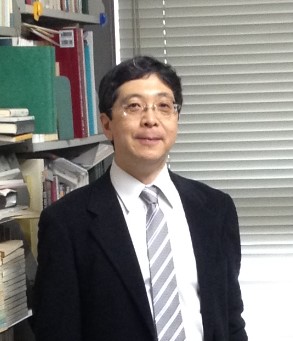1. What are the distinguishing features of your organization?
The Institute was founded in 1984 as the Keio Center for Area Studies in Japan. From its inception, its objective was to conduct interdisciplinary and comprehensive research, and it served as a focal point for a variety of specialists across the university to collaborate and conduct joint research. The Keio Center for Area Studies provided researchers with a practical venue to conduct research on regional studies, which was rare in Japanese academia despite its tremendous significance to the contemporary world. Moreover, research conducted at the Center was not restricted to Keio University. In addition to serving as a gathering place for researchers from all academic departments of the University, it also organized joint research projects for researchers worldwide. Therefore, the Keio Center for Area Studies served not only as an interdisciplinary and comprehensive facility but also as an international facility. The newsletter of the Keio Center for Area Studies (the predecessor of the current center) was particularly notable for bringing together researchers from Japan and other countries who were involved in both the humanities and the sciences; it published research projects that attempted to create a fusion between these disciplines.
In 2004, the Keio Center for Area Studies was reorganized as the Institute of East Asian Studies to emphasize East Asian research topics. The reorganization was based on a decision to enhance research focused on the East Asian region. Despite these changes, the spirit of the original center was retained. In fact, the geographical scope of research topics often transcends the conventional semantic limitations of the term “East Asia” to include regions that are separately defined as Southeast Asia, South Asia, and the Asia-Pacific Region, and researchers utilize a variety of approaches (e.g., historical, political, economic, and cultural-anthropological).
Nevertheless, research conducted at the Institute primarily focuses on the modern history, politics, international relations, and security of China and the Korean Peninsula. An important reason for this is the abundance of materials related to 20th century China at Keio University. To further promote research related to China and the Korean Peninsula, the Center for Contemporary China Studies was established in 2007 and the Center for Contemporary Korean Studies in 2009. Both these centers hold regular seminars in Chinese, Korean, and English, and they publish their research results in serial publications called the Contemporary China Research Series and the Contemporary Korea Research Series.
2. What kinds of researches related to the three countries have been conducted in your organization? Please introduce your previous and current research.
Unfortunately, very few research projects conducted either in the past or currently underway at the Institute have focused on trilateral relations among the three countries given the emphasis on the internal politics and foreign relations between them. Japan-China relations and Japan-ROK relations have been the topic of many studies, although research projects such as “East Asia at a Turning Point and Relations with the Democratic People’s Republic of Korea,” “Electronic Networks in East Asia,” and “Logistics in Asia” have included the trilateral relations within their scope of consideration. However, these projects have either limited themselves to bilateral relations or included other countries in addition to these three. On the one hand, trilateral relations could be considered too narrow a focus because it would be more meaningful to include either East Asia or the entire Asian continent; on the other hand, trilateral relations could be considered too broad because the differences between the three countries are so pronounced that it is difficult for Japanese researchers to address both China and the ROK simultaneously within the scope of a single research project.
Thus, we are compelled to admit that it is difficult to engage in research projects that have the three countries as their framework. However, it is relatively easy to hold seminars including researchers from all three countries.
3. What is your future prospect for trilateral cooperation and what kind of research should be done to that end? Also, what kind of role the Trilateral Cooperation Secretariat (TCS) can play for this purpose?
If a triangle is used to represent trilateral relations between Japan, China and the ROK, each side of the triangle is characterized by political tensions. When one considers this reality, it becomes clear that for the foreseeable future, any political cooperation among these three countries that goes beyond simply continuing dialogue would be difficult. The commonly used phrase “hot economics, cold politics” can be applied not only to Japan-China relations—as it ordinarily is—but also to any of the three sides of the triangle representing relations between the three countries. Perhaps, all we can do presently is to utilize cooperation in fields other than politics—in particular, economics, sociology, and cultural studies—to ensure that political relations do not deteriorate further. As researchers, we prefer to hold international conferences that address issues of importance between the three countries, such as perceptions of historical events and territorial issues, from a purely academic standpoint. However, such a conference could hardly be considered productive. It is even difficult to hold a conference that deals with “civil society.” Simultaneously, however, this type of problem could be avoided if such conferences were focused on issues such as environment issues, disaster management, transport infrastructure, and infectious diseases. I believe it is preferable to avoid dealing directly with political issues for the present while thinking about how to cooperate on issues that affect the politics of the trilateral relations over the long term.
Our Institute holds an annual international symposium jointly with Waseda University (Japan), Soochow University (Taiwan), and Southwest Jiaotong University (Sichuan Province, China). The symposium takes place every year on a rotational basis, and a variety of issues related to the East Asian region are discussed. Although it is difficult to decide upon a specific theme for each year’s symposium, better results are obtained if we utilize a strategy of “surrounding politics with issues that are not politically sensitive,” derived from the Chinese Revolution’s strategy of “surrounding cities with rural villages.” By adding universities in the ROK to this cooperation framework, we are planning to develop a dialogue framework between the four constituents of East Asia: Japan, China (Mainland), the ROK and Taiwan.
Regarding expectations from the TCS, I believe, for example, that the creation of a “TCS Fellowship” for relatively younger scholars—although not necessarily restricted to scholars at research institutes in East Asia—that provides some research financing to those involved in studying common problems throughout East Asia (e.g., aging populations, transport infrastructure, and global warming) would be a good first step. The proposed fellowship would allow scholars to spend a fixed period at universities in Japan, China and the ROK (e.g., one month each at Keio University, Peking University, and Yonsei University), where they could work on both research and exchanges. It would also be extremely beneficial to establish grants that can help fund the operational costs of academic forums such as those mentioned above that include but are not limited to researchers from the three countries.
TAKAHASHI Nobuo TAKAHASHI Nobuo is professor of Faculty of Law at Keio University in Japan. He graduated with a Bachelor’s degree from the College of Comparative Culture (Concentration Number 2) at the University of Tsukuba. In 1995, he earned a Ph.D. from the Graduate School of Law, Keio University. After serving as a full-time lecturer at Kyoto University of Foreign Studies, he became a full-time lecturer for the Faculty of Law, Keio University, in 1996; an assistant professor in 1999; and a professor in 2002. His main publications include “The Chinese Revolution and the international environment: The Chinese Communist Party’s perceptions of international conditions and the Soviet Union, 1937 to 1960” (1996); “The party and farmers: A re-examination of the Chinese farmers’ revolution” (2006); and “The handbook of contemporary Chinese political research” (2015).
| |  |


